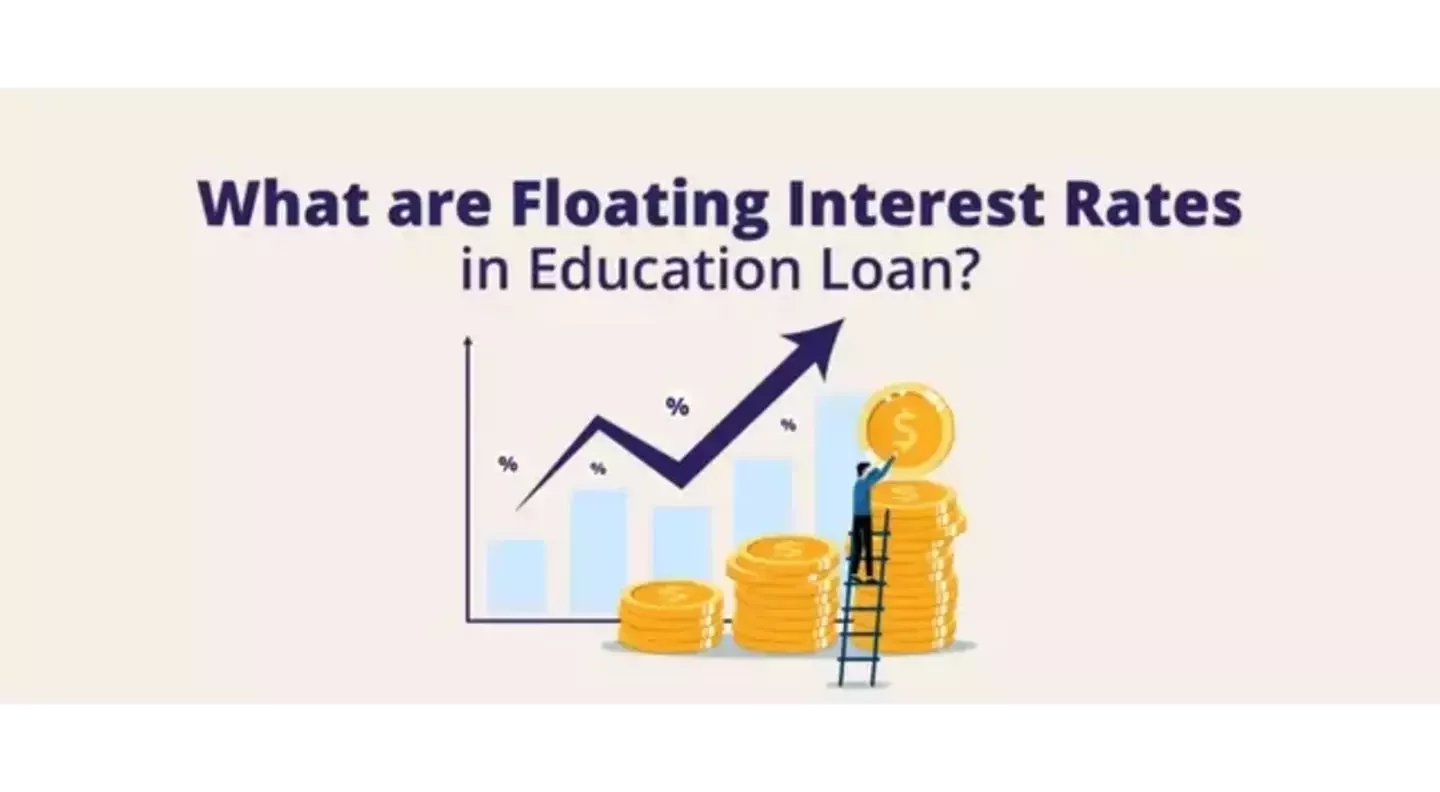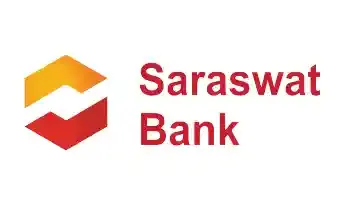Get instant loan offer suitable to your profile !


On this Page:
Understand floating interest rates in education loans. Learn how they work, their benefits, drawbacks, and tips for managing your student loan effectively. Explore now!
When you get an education loan, you will plan your monthly EMI and set a budget. But as a surprise to you, sometimes you will see a lower EMI to be paid; other times, it will be higher than your monthly budget. You might wonder what affects your education loan EMI. And here comes the concept of floating interest rates.
The floating interest rate is a kind of interest on loans highly dependent on the financial market conditions. As the name suggests, they float per the changes, sometimes favorable to the borrower and vice versa at other times.
Interest on education loans is usually calculated as floating. It means that in the 10 - 15 years repayment period, a student borrower will repay the EMI in irregular installments. While floating interest rates are better for loans with longer repayment periods, a fixed interest rate is best suited for short-term loans.

What is a fixed interest rate? In fixed interest rates, the rate of interest fixed at the time of taking the loan is what you will have to pay for the entire repayment period. There are no alterations, irrespective of changes in the market.
What is a floating interest rate? Floating interest rates, as evident from the name, have a floating nature and fluctuate with the market forces. The interest rate may increase or decrease multiple times during the entire duration of the repayment period. The RBI determines the base rate based on market dynamics, and the interest rates are pegged to the base rates.
While the sum of fixed interest rates is simple and doesn’t need much deliberation, floating rates are complex to predict the total sum of interest repayment. Consider the non-linear EMIs when calculating the monthly interest before taking an education loan with floating interest rates.
Read more about education loan interest rates here.

It is better to compare the floating interest rate for the education loan before finalizing your lender. Note that the effective interest rate is determined by the type of education loan and your profile’s strength.
Here is a comparison of different lenders and their *floating interest for education loans:
| Lender | Category | Floating interest rates |
|---|---|---|
|
SBI |
Public sector bank |
11.15% |
|
UBI |
Public sector bank |
10.85% - 12% |
|
Axis Bank |
Private sector bank |
13.70% - 15.20% |
|
ICICI Bank |
Private sector bank |
9.5%-14.25% |
|
IDFC FIRST Bank |
Private sector bank |
9% - 15% |
|
HDFC Credila |
NBFC |
13.80% |
|
Auxilo |
NBFC |
15.10% |
|
InCred |
NBFC |
10.5% - 13.5% |
|
Avanse |
NBFC |
14.55% |
|
Prodigy Finance |
International lender |
12.06% |
*Floating interest rates as of 01.12.2024

Floating interest rates allow you to enjoy positive changes in the financial market. If the RBI decreases the margin of interest rates, the floating rate will be lowered. The lowered interest rates will apply until the next revision cycle, usually yearly, quarterly, or half-yearly.
However, if the RBI increases the marginal lending rate, the floating rate will be higher than you pay. But the chances are fewer since the overall economy doesn’t vary absurdly in a sporadic manner.
|
Which is the best education loan with floating interest rates? Check out the link to know. |

The Marginal Cost of Funds Based Lending Rate, commonly called the MCLR, is the benchmark interest rate below which banks can’t lend. The RBI introduced it in 2016 to make the lending process more democratic and uniform for all lenders.
When the MCLR changes, the interest rate on loans linked to it also changes. This means the EMI amount you must pay will increase or decrease depending on the MCLR. A lower MCLR will lead to lower interest rates and, thus, lower EMIs for borrowers.
MCLR depends on factors like Repo rate, operating cost, cost of funds, loan tenor(duration of the loan), etc.
However, the MCLR got replaced by EBLR, or External Benchmark Linked Rate, in 2019. Although many lenders still follow MCLR, eventually the EBLR will be adopted by them.
|
How does the RBI repo rate affect the MCLR? The repo rate is the rate at which banks can make money from the RBI by selling securities in case of any fund shortage. A cut in the repo rate will lower your interest rate, but an increment in the repo rate may increase the interest rates. |

Your education loan floating interest rate is either repo-based (RLLR) or MCLR based. It is calculated as MCLR+ A% or repo rate+ A%. Here, the “A” is constant, known as the premium percentage, and the MCLR or repo-based rates keep changing at certain intervals.
For instance,


It’s a matter of market conditions and RBIs repo rate that decide the extent of fluctuations in floating interest rates.
But, as mentioned earlier, it is not like a stock market; rates don’t change abruptly and unevenly. So, floating rates can benefit long-term loans, as paying a fixed interest rate may increase your repayment.



For example if your overall interest rate was 13.50%, then it can barely float between 13.25% - 14.0%.
Read more on how your education loan interest can change.

The reset period is when the interest rates will be reset to the current rate based on market changes. The bank decides the reset period, and the borrower must carefully read the documents and convey that the reset period is acceptable to them.


The rationale behind keeping a long reset period is that the benefit of a lower interest rate can be transferred to a borrower for a relatively long period. But in a long reset period, if the rates increase, the borrower has to pay a higher interest rate for a relatively long duration.
Plan your education loan repayment amidst the interest variations:




You need the following information to calculate the floating interest rate:





To calculate the interest on floating interest rates education loan, follow these steps:





Please note that this is a simple form of the calculation and the actual interest rate calculation may involve compound interest and other additional charges based on the terms and conditions of the loan. Also, as the floating interest rate changes over time, the calculation may need to be adjusted for a renewed interest rate.

Let us understand some of the advantages of floating interest rates in student education loans:







Now, let us understand some of the disadvantages of floating interest rates in student education loans:







There is no fixed rule to assess which is better; it depends on the market changes and your financial choices.
Floating rates benefit the student if RBI policy makes the interest rates low. In such cases, the flexibility of interest rates reduces the burden on the EMIs, which is a significant relief to students who start earning after completing the course.
But if the market is adverse, the floating interest rate can add up to your debt. It is better to see both sides of floating interest rates to make an informed decision. The table below compares the pros and cons of floating interest rates:
| Pros | Cons |
|---|---|
|
Floating interest rates are 1% - 2.5% lower than fixed interest rates |
EMI will change depending on the market conditions. Unexpected hikes in EMIs may trouble the student |
|
Fewer chances of interest rates getting higher |
Hard to budget the EMIs due to unpredictable changes |
|
Students can pay 3 - 4 months of EMI when the interest rates are very lower |
Cannot follow a fixed payback timeline |
If assessed from the present state of affairs, India is on track to witness colossal growth, and RBI will keep the interest rates lower to encourage lending. So, going with the floating interest rate will be conducive for the times to come. But again, everything reverses if the market conditions turn back unexpectedly.
A crucial action is evaluating the market conditions before applying for an education. Take our help and ease your work. We will do the market research for you and suggest the best loan option while you are in the comfort of your home.

Generally, the interest rates for education loans are floating for all lenders. However, some lenders would charge a fixed interest for education loans. Contact your lender to clarify whether you can get an education loan at a floating interest rate.
The floating nature of interest applies to secured and unsecured education loans alike. However, compared to unsecured loans, secured loans will have a lesser interest rate due to the involvement of collateral security. As the interest rate is MLLR + A% (A= component decided by the lender), the lender’s component in the total interest rate will be slightly lesser for secured education loans.
The floating rate of interest in loans is affected by many factors, some of which are unpredictable. Changes in the following are some factors will affect the interest rate of loans:





To a great extent, the market conditions are predictable for interest rates. But unpredictable situations like a pandemic or war may influence economic activities. In such cases, the fluctuations are beyond the predictions by experts.
It is easier to compare the floating interest rates of two lenders. The effective income rate is determined by adding the MCLR and a fixed component. The lender determines the fixed component based on various factors. You can compare the effective interest rates and choose the better education loan option.
Check Your Education Loan Eligibility

Ask from a community of 10K+ peers, alumni and experts
Trending Blogs
Similar Blogs

Network with a community of curious students, just like you
Join our community to make connections, find answers and future roommates.. Join our CommunityCountry-Wise Loans
Best Lenders for Education Loan

ICICI Bank

Axis Bank

Union Bank

Prodigy

Auxilo

Credila

IDFC

InCred

MPower

Avanse

SBI

BOB

Poonawalla

Saraswat